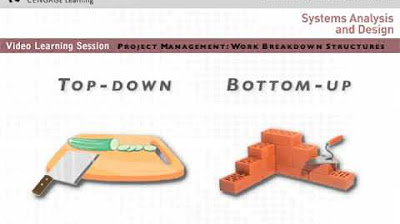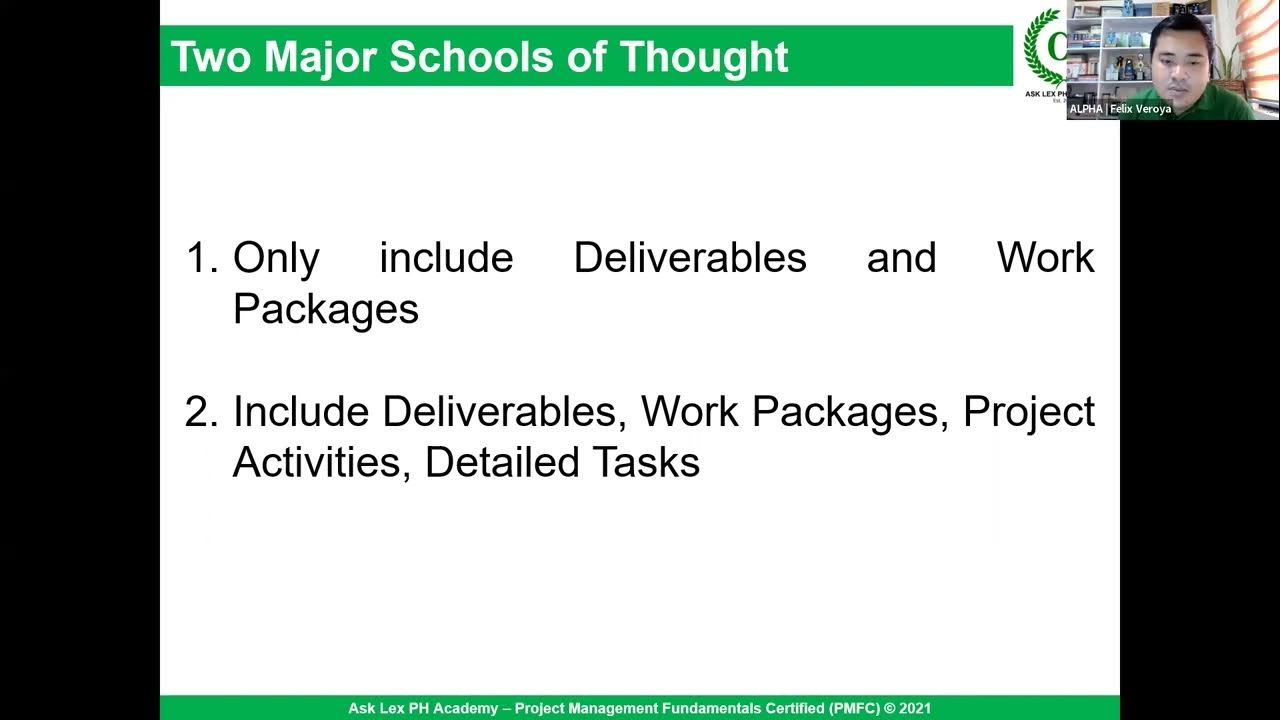WBS Creation - 10 Golden Rules - Work Breakdown Structure
Summary
TLDRThis lesson outlines ten essential rules and pitfalls for creating a Work Breakdown Structure (WBS). Key points include collaborating with your team during planning, ensuring the WBS has at least three levels, and differentiating between WBS items and tasks. It emphasizes naming conventions, adherence to the 100% rule for scope completeness, and recognizing that WBS is often refined through iterations. The lesson also highlights that work packages should be manageable in size and suggests using summary tasks in project planning. Lastly, it introduces the 80/80 rule for work package duration, providing guidance on effective WBS creation.
Takeaways
- 😀 Involve your team in creating the WBS for better understanding and engagement.
- 😀 A well-structured WBS should have at least three levels to reflect project complexity.
- 😀 Remember that a WBS is not the same as a task list; it's a decomposition of work components.
- 😀 Name WBS items as nouns to improve clarity and identification in project schedules.
- 😀 Focus on the WBS without breaking it down into tasks during its creation.
- 😀 Follow the 100% rule to ensure all work is captured and unnecessary items are excluded.
- 😀 Expect to revise your WBS as you learn more about the project; it's rarely complete in the first iteration.
- 😀 Decompose WBS items only to a logical extent for assignment to individual resources.
- 😀 The lowest level of the WBS, the work package, should correspond to a summary task in the project plan.
- 😀 Use the 80/20 rule to guide the size of work packages, ensuring they are between 8 and 80 hours.
Q & A
What is the primary purpose of creating a Work Breakdown Structure (WBS)?
-The primary purpose of creating a WBS is to break down a project into manageable deliverables, ensuring comprehensive understanding and involvement of the team in the planning stage.
Why is team involvement crucial when creating a WBS?
-Team involvement is crucial because it fosters complete understanding and ownership of the project tasks, leading to a more thorough and collaborative WBS.
How many levels should a WBS typically have?
-A WBS should have at least three levels, with the highest level representing the project itself. Medium to large projects may require additional levels based on their complexity and size.
What is the difference between a WBS and a task?
-A WBS is a breakdown of work components that need to be completed, while tasks are specific actions derived from the WBS. It's important not to confuse the two.
What naming convention should be followed when creating WBS items?
-WBS items should be named as nouns rather than verbs, making it easier to identify them and associate them with project schedules in the future.
What does the 100% rule in WBS entail?
-The 100% rule states that each lower level of decomposition must represent all the work of the higher level, ensuring that all scope is captured without including unnecessary elements.
Is it common for a WBS to be perfect in the first iteration?
-No, it is almost never complete or correct in the first iteration. As more is learned about the project, the WBS will need to be updated and altered.
What is the significance of the lowest level in a WBS?
-The lowest level of the WBS, known as the work package, should correspond to a summary task in the project plan, allowing for easier management and scheduling of tasks.
What does the 8/80 rule refer to in WBS decomposition?
-The 8/80 rule suggests that all work packages should take more than 8 hours and less than 80 hours to complete, providing a guideline for when to stop breaking down the WBS.
How can sharing WBS examples among learners improve skills?
-Sharing WBS examples allows learners to gain different perspectives and ideas, enhancing their understanding and skills in creating effective WBS for their own projects.
Outlines

This section is available to paid users only. Please upgrade to access this part.
Upgrade NowMindmap

This section is available to paid users only. Please upgrade to access this part.
Upgrade NowKeywords

This section is available to paid users only. Please upgrade to access this part.
Upgrade NowHighlights

This section is available to paid users only. Please upgrade to access this part.
Upgrade NowTranscripts

This section is available to paid users only. Please upgrade to access this part.
Upgrade Now5.0 / 5 (0 votes)





